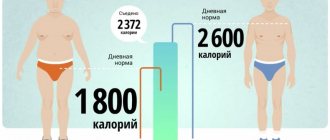“Walk more, you will live longer,” says the old proverb. This truth is confirmed by doctors: active movement improves the general condition of the body, reduces the risk of diseases, increases the defenses of the immune system, keeps the body in good shape, thereby delaying the manifestations of aging. In the world of progressive technologies, walking remains the simplest, most affordable, but effective way to increase physical activity.
In the second half of the 20th century, Japanese scientists proved the connection between walking and life expectancy. Based on research, a popular expression was born: 10,000 steps a day will help you live to 100 years. The Japanese adhere to this theory and are rightfully considered a nation of long-livers.
The benefits of walking
A sedentary and mostly sedentary lifestyle leads to excess weight, the development of chronic diseases and even depression. Regular walking helps to increase the load without special exercise equipment and devices - on flat and rough terrain, uphill, up stairs.
Proper walking with monitoring of breathing and heart rate, adhering to safety precautions, has a beneficial effect on the condition of the human body:
- posture is straightened;
- movement coordination improves;
- the cardiovascular and respiratory systems are trained;
- lymph outflow accelerates;
- the body's resistance to colds increases;
- indicators of muscle strength and endurance increase;
- excess fat deposits are burned.
Movement increases the speed of metabolic processes, resulting in natural detoxification of the body. Walking at an average pace stimulates the production of endorphins - joy hormones that improve your psycho-emotional state.
Walking vs. Running – Which to Choose?
Often people on a diet go for morning or evening jogging in hopes of quickly getting rid of extra pounds. But do not forget that running increases the load on the knee and ankle joints. And when you're overweight, running puts even more stress on your joints, which can lead to arthritis.
Running is also harmful for vascular diseases. Due to increased stress, blood begins to flow faster, and if the elasticity of the walls is impaired, which often happens in obese people, the vessels may not be able to withstand it and burst.
Walking is a less traumatic form of physical activity. Of course, the effectiveness of losing calories when you run or walk at a leisurely pace is different. But only when we are talking about running at high speed. Only experienced athletes can run a few kilometers at an accelerated pace. And when jogging, you will lose only slightly more calories than when walking briskly.
How to count correctly
It is difficult for the average metropolis resident to imagine how many kilometers one needs to walk to complete 10,000 steps, and what is the benefit of moving around the city without transport. Taking these numbers literally, one can become discouraged by the difficulty of achieving results. In fact, a person passes part of this volume without even noticing, while going about his daily activities. The remaining distance can be walked intentionally in the park, at the stadium, just on the street, in the gym, or on the way to work.
Physical activity level is calculated in kilometers or steps. If it is not possible to measure the distance, it is more convenient to count the number of steps per 100 meters and build on this figure. Step length is an individual value for each person, on average it ranges from 40 cm to 1 m.
How to measure average walking speed?
According to statistics, a person walks 4000 steps per day; when walking in a ten-minute period of time, you can take 1000 steps.
Human movement takes into account the dynamics and pace of movement:
- Walking in the form of a walk - rest and movement in a park or square, the pace is slow, the average speed of a walking person is 3-4 km/h. When moving slowly, a person walks 70 steps per minute. A walking pace cannot be called healthy; there is no physical activity. For older people, a slow walk can only be beneficial.
- Walking is for health purposes - the movement is accelerated up to 120 steps per minute, you can walk 7 km/h. This option affects the general well-being of the body, the arterial system, and the body feels cheerful.
- Race walking is a method of movement designed for people who maintain physical health and a slim figure. The average speed reaches 16 km/h, the pulse accelerates to 180 beats per minute.
It is much more difficult to spend time standing; while walking, the stability of the body increases.
How many steps in a kilometer
Before you start actively walking and covering distances of 10,000 steps, you should study the movement technique and find out how many steps per kilometer in your case. A modern person does not need to carefully count steps when walking, covering the entire distance. For this task, special gadgets, smartphone applications and average statistical data are used.
Averages
The length of a step, even for one person, is not a constant value and depends on the following factors:
- height, gender and weight of a person;
- movement speed;
- shoes;
- health status;
- level of physical fitness;
- the surface on which a person moves.
Statistical data allows you to use approximate values for calculations:
- the average step of a person 175 cm tall is 80 cm;
- The average length of a woman's step is 70 cm.
There are several ways to calculate stride length:
- Measuring length: Step at a normal pace, measure the distance from the tips of the toes of the foot left behind to the tips of the toes of the foot placed in front.
- Calculation of average length: measure a distance of 10 meters, count the number of steps, divide the first value by the second.
- Using a special formula according to which the length of a step depends on a person’s height.
Measuring distance in steps
The easiest way to determine the distance is for tall people, whose step length when walking at a pace above average will be 1 m: 1000 steps - 1 km. Other walkers without the use of special devices are recommended to use the table data:
Step distance for men and women
| Men | Women | |
| Length 1 step | 0.8 m | 0.7 m |
| How many steps in 100 meters | 125 | 143 |
| How many steps in 1 km | 1250 | 1430 |
Thus, after taking 5,000 steps, a person will walk from 3.5 to 4 km, depending on the size of the step. Accordingly, 8,000 steps is 5.5-6.5 km, and 10,000 steps is about 8 km.
Measuring distance over time
On average, a person covers 1 km at a fast pace in 10 minutes; this value will be different at low speed and short stride length. A 7 km walk will take 1 hour and 10 minutes. The 10,000 steps (8 km) recommended by Japanese doctors can be completed in 1 hour 20 minutes at high speed.
How to calculate
For a beginner, the goal of 10,000 steps may seem unattainable, but if you convert this figure into kilometers, the distance becomes clearer. When it is not possible to use an online step calculator, trainers advise converting the movement into kilometers once and using individual data.
The average step length of a woman and a man is calculated by the formula: DS=(P:4)+0.37, where
- DS - step length;
- P—height in meters;
- 4 and 0.37 are coefficients.
With a height of 170 cm, the average value will be (1.70/4) + 0.37 = 0.79 m.
The conversion of steps per kilometer is carried out using simple calculations; let’s consider the example of a person 170 cm tall with a step length of 79 cm:
- in 100 meters - 100:0.79=126 steps,
- in one kilometer - 126*10=1,260 steps;
- 2 km - 2520 steps;
- 5 km - 6,300.
Converting 10,000 steps to kilometers is also easy in two ways:
- 10,000:1260=7.9 km;
- 10,000*0.79=7900 m.
Not so simple arithmetic
Summary data shows that the reference 10,000 steps for people of different heights moving at different speeds can range from 6 to 8 km. Calculating the length of your daily walking distance based on the indicators of fitness gadgets and applications is also difficult, since there is a possibility of program failure and inaccurate data collection. For example, some pedometers do not take into account walking in place, backwards or sideways.
Experts advise making an individual calculation of step length depending on height using a formula or using an online calculator, then converting it into kilometers. Information about how many steps are 100 meters makes it easy to determine their number in 1 km.
Are there any contraindications?
There are restrictions. Age doesn’t matter, but health status does. Walking for a long time at a fast pace is a serious load that must be adequately applied.
It is important to monitor your condition while walking. If shortness of breath appears or your pulse goes off scale, you should rest or even stop exercising. Over time, the body will get used to it and begin to accept the load more calmly.
Of course, do not go out for a walk if you have a cold or immediately after an illness.
Pavel Evdokimenko: “If a person has sore joints, then you need to put them in order (for example, with therapeutic exercises) and only then load them with long walking.”
Walking can be different
Active movement promotes weight loss, and the simplest form of physical activity is walking. It speeds up the weight loss process in the following ways:
- calorie consumption increases;
- metabolic rate increases;
- the blood is saturated with oxygen;
- fat breakdown processes are stimulated;
- muscles are strengthened, which also burn energy.
Walking is recommended for people who are overweight, have problems with the cardiovascular system and joints. This load allows you to burn calories and carefully prepare your muscles for more complex exercises.
Walk and lose weight
The process of losing weight starts with a calorie deficit, when more energy is expended than is received. A calorie deficit can be achieved in several ways simultaneously:
- reducing the calorie content of the daily diet;
- increasing energy consumption.
Walking at a relaxed pace without nutritional adjustments will not have a significant impact on weight loss. Taking 10,000 steps every day at different paces will burn different amounts of calories. To achieve serious achievements and burn enough energy, you need to calculate how much distance traveled per day will create an effective calorie deficit.
Energy costs when walking
Calorie consumption when walking is calculated using the formula:
weight (kg)*distance (km)*0.5=energy expenditure (kcal)
For example, a person weighing 60 kg, walking a distance of 1 km, will burn 30 kcal. Following this formula, when covering a distance of 2 km, 60 kcal are consumed, 5 km - 150 kcal.
Converting distance to number of steps (for a person with a step length of 80 cm, weighing 80 kg)
| Distance | Number of steps | Energy consumption |
| 100 m | 125 | 4 kcal |
| 1 km | 1250 | 40 kcal |
| 8 kilometers | 10 000 | 320 kcal |
Based on the table, a person weighing 80 kg with a step length of 80 cm, having walked 1,000 steps, will cover a distance of 0.8 km and consume 32 kcal, 6,000 steps per day - respectively, 7.5 km 300 kcal. A distance of 10,000 steps burns 320 calories.
Is it possible to start with 10 thousand right away?
Only with an eye on health. If you can’t cover 8 km right away, then it’s better to reduce the load and add steps gradually. The main thing is to focus on your well-being.
Pavel Evdokimenko: “When you are young and healthy, you can start with 10 thousand even tomorrow. But if your knees are ruined, it's not very healthy. In this case, you need to start gradually.”
We talked to Wonder Woman: She did 3,000 squats and didn't kill her knees
Alternative to fitness training
Walking as a form of fitness has a number of advantages and brings undoubted benefits to the body:
- does not require significant cash costs or investments, you can practice in comfortable clothes and shoes;
- Suitable for people who are overweight and have poor physical fitness;
- tones and strengthens the body, preparing the body for increased stress.
How to start walking
An unprepared person in pursuit of results should not take tens of thousands of steps a day, making excessive efforts - this will lead to tension and fatigue. You should start with short distances, gradually increasing the distance and speed of movement.
It is recommended to devote the first workout to building a track and studying your own data - how many steps are in 1 kilometer, how much time is needed to cover such a distance and calorie consumption, if the goal is not only to strengthen muscles, but also to lose weight. Next, you need to find out how much distance is covered during normal activities and movements - it is convenient to use a pedometer for this.
During the first week of classes, 1000 steps per day are added to the basic 1 km (an additional 32 calories are consumed). In the second week - by 1500, the third - 2000, gradually increasing the distance to 4 km (or 5,000 steps), while 150-160 kcal per day will be burned. After a month of training, adding 1000-1500 steps per day per week, the distance will increase to 10,000 steps, which burns 320-350 kcal.
Active weight loss
Fitness trainers say that walking helps you lose weight, but to achieve good results you need to combine walking and strength exercises, as well as balance your diet.
Walking 10,000 steps burns 320 calories per day, which translates to 2,240 calories per week or 250-300 grams of fat. At this rate, the possible loss per month is 1-1.5 kg. Strength training in this case is necessary in order to build muscle mass and increase passive energy expenditure.
How much should you walk a day?
The figures of 10,000 steps or 8 kilometers became popular after Japanese scientists declared the benefits of walking, but these values are not suitable for everyone and become surmountable. For sedentary people with low physical activity, even 2000 steps (1.5 km) will be a good result. By gradually increasing walking to 4000 steps (3 km), you can improve the condition of the cardiovascular, muscular and nervous systems. A daily distance of 5 kilometers (6250 steps) will tone the body and stimulate weight loss processes.
Covering 10,000 steps a day for different categories of the population will take different distances, which depends on the size of the step: one step is 0.4-0.8 meters. The walking workout will take 1-1.5 hours; it can be divided into several parts and completed throughout the day.
10 thousand steps a day is a reference figure, an approximate value to which we should strive. In any case, increasing your activity by 1,000–3,000 steps per day will have a beneficial effect on the body.
How to walk 10,000 steps without problems: useful tips
At first, this number may seem huge. In fact, it is quite real, but it is important to go regularly and profitably. To make this easier, take into account the following recommendations:
- You need to clearly define your motivation . Some people count steps for their figure, others for their health. By understanding why you want to do this, you can overcome the urge to give up.
- The concept of ten thousand steps does not involve allocating a specific time for them, but increasing movement in principle . A significant part of the required distance can be gained by simply walking for pleasure, walking instead of transport, that is, changing your lifestyle so that more space is allocated for activity.
- Use a pedometer . You can buy it separately or download the corresponding application to your smartphone. He will take care of all the calculations. This way you will know how far you walked and how many calories you burned. You won’t need to count on your own either – this will make walking easier and more enjoyable.
- If you haven’t walked much before, you shouldn’t immediately focus on a specific number . Go as far as you can and gradually increase that number by one or two thousand. This way, you will eventually reach the required amount.
- Go for walks . Just walking is easy and pleasant. Enjoy your walks and relax, and don't just try to get the right amount.
- Remind yourself to move . At first it will be difficult to get into the right rhythm, so reminders on your phone or other devices will help you not to miss your next walk. Over time, the movements will become part of your normal lifestyle, and you won’t need to remind yourself about it.
- Record your load . By monitoring your progress, it will be easier to continue. You can write down how much you have overcome today. It is recommended to monitor body weight and volume. If you are working out to lose weight, this will be the best motivation.
- It would be nice to find like-minded people . Walking with someone is more fun and enjoyable, and it’s also less likely that you’ll give up.
- Shoes must be comfortable and true to size , otherwise you simply won’t be able to walk much.
- It is better to cover at least a small distance than not to travel at all . Any walk is useful, so take every opportunity for it.
Despite the safety of walking, long distances may be contraindicated for certain categories of people. Therefore, if you have any health problems, consult your doctor first.
What determines how many calories are burned when walking?
The movement is accompanied by muscle tension, joints work, blood circulation and oxygen supply to the brain increases, human thinking is activated and improved.
You can determine the number of calories burned taking into account several factors:
- amount of time spent walking;
- mileage of distance covered;
- body weight, height, leg length;
- the age of the pedestrian is taken into account;
- metabolic features;
- health status;
- type and methods of walking;
- time of day and area conditions.
Taking into account the above indicators, you can calculate how many calories are burned when moving. Moving at an average speed burns 200 calories per hour. By walking at a slow pace, a person loses 100 calories.
Race walking is suitable for young and old people who want to lose weight. The destruction of calories does not occur evenly; in the first half hour, a minimal amount is consumed; at an accelerated pace in the next half hour, burning reaches 500 calories.
Two or three walks a day for at least 5 minutes prevent blood pressure problems.











